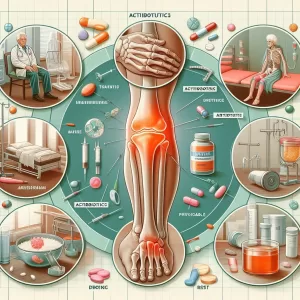What is Mastotomy with Exploration or Drainage of Abscess: Overview, Benefits, and Expected Results
A mastotomy refers to the surgical incision of the breast. It is commonly used to explore the said body part and look for signs of disease or to drain an abscess in the area. A breast abscess, which occurs due to the accumulation of pus, causes pain and swelling. Some of them form just under the skin, while some can form deep within the breast. Doctors get rid of them by draining the pus out to allow the skin to heal properly. To do so, a mastotomy is performed.
Who Should Undergo and Expected Results
A mastotomy is necessary for women with suspicious growth in the breast and those who complain of symptoms such as swollen lumps and breast pain.
If the doctor is unsure as to what is causing the symptoms, mastotomy with exploration is performed to make a definitive diagnosis.
If a patient has a breast abscess, the doctor will perform a mastotomy to drain it. However, it is important to note that abscesses that form just underneath the skin can be drained out through a needle aspiration while those that form deep within the breast can be accessed through a mastotomy.
Breast abscesses are commonly caused by bacterial infection or mastitis, which is very common among breastfeeding women. This is because infections can easily occur if the milk ducts become clogged. When left untreated, mastitis can lead to an abscess. However, women who are not breastfeeding can still get breast abscesses. This happens when bacteria enters the breast through a cracked or pierced nipple. Studies show that abscesses are most common among women who are between 18 and 50 years old.
How is the Procedure Performed?
All breast abscesses need to be drained to keep the infection from spreading and causing complications. Abscesses that are small and are near the skin surface can be drained using a needle or syringe. This means that the pus can be aspirated without cutting through the breast. This can be done in a doctor’s office or an emergency room. However, if the abscess is big or deep, a mastotomy is needed.
The following steps are taken to explore breast tissue or drain out an abscess with a mastotomy:
If the infection is severe, the patient’s nipple can sometimes become inverted. If this has occurred, the patient can have her nipple reconstructed. This can be done during the same procedure, but it can also be done at a later time.
Most doctors also advise their patients to undergo breast cancer screening after the procedure, especially if they are not breastfeeding. This is because any kind of breast infection in women who do not breastfeed can be a sign of breast cancer.
Possible Risks and Complications
Patients who undergo a mastotomy are at risk of:
There is also a risk that the breast abscess may recur. But if the breast glands affected by the primary abscess were also removed, this is less likely to happen.
Patients who undergo a mastotomy to drain out an abscess should return to their doctor after 1 to 2 weeks to make sure that the infection is completely gone.
References:
Question & Answer (SEO Optimized):
**Topic:** Mastotomy with Exploration or Drainage of Abscess
**Question:** What is Mastotomy with Exploration or Drainage of Abscess and when is it performed?
**Answer:**
Mastotomy with exploration or drainage of abscess is a surgical procedure performed to remove an abscess from the breast tissue while simultaneously exploring the area to identify any underlying causes of the infection or potential complications associated with the abscess formation in the breast tissue.
Abscesses are collections of pus that develop due to bacterial or fungal infections within the breast tissue and can result from various causes such as mastitis (breast infection), breast surgery complications or local tissue trauma including cysts and tumors that have been previously treated with either core needle biopsies or aspiration procedures.
**Question:** What are the benefits of having a Mastotomy with Exploration or Drainage of Abscess?
**Answer:**
The primary benefit of having a mastotomy with exploration or drainage of abscess is to remove the abscess and eliminate the infection from localized breast tissue while preventing the spread of infection to other parts of the body.
Other benefits may include:
**Pain Relief:** Removing the abscess can relieve pain caused by the pressure and inflammation associated with the infection.
**Reduced Risk of Complications:** Drainage and treatment of the abscess can help prevent complications resulting from the infection such as scarring or disfigurement in the breast area and the formation of internal fistulous tracts due to the infection spreading.
**Improved Breast Aesthetics:** Treatment can help restore the shape and appearance of the breast affected by the abscess if it is detected and dealt with appropriately during early stages.
**Question:** What are the Expected Results after Mastotomy with Exploration or Drainage of Abscess?
**Answer:**
Expected outcomes after mastotomy with exploration or drainage of abscess include:
**Complete Abscess Removal:** The surgical procedure aims to remove the entire infected tissue of the abscess from the breast area.
**Infection Resolution:** Antibiotics are often prescribed post operatively to treat and prevent the spread of bacterial infection.
**Scar Formation:** The procedure may leave a minimal scar on the breast tissue which usually fades over time.
**Return to Normal Activities:** Most patients can resume normal activities within a few weeks after the procedure.
**Question:** Who is a Suitable Candidate for Mastotomy with Exploration or Drainage of Abscess?
**Answer:**
Suitable candidates for mastotomy with exploration or drainage of abscess are women who have an abscess in their breast tissue confirmed by imaging tests such as ultrasound or breast MRI and have not responded to treatment with antibiotics alone.








Insersion of drainage tube after opening a pus filled abscess
Step-by-step procedure of incision and drainage of an abscess to address pain, infection, and swelling